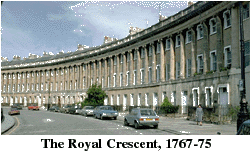I began class with some sample IDs to prepare the class for the midterm of the following week:
Puffs, powders, patches, Bibles, billet-doux
AND
What dire offence from amorous causes springs,
What mighty contests rise from trivial things
As students correctly pointed out, what we have in the first ID from Rape of the Lock is a parodic instance of an epic catalogue, that also exemplifies two terms of importance to the understanding of the mock epic: zeugma and bathos. We also discussed how this particular catalogue lists the elements of Belinda's armor, much as one might have a catalogue of arms in the traditional epic. Whereas we still appear to be caught in the values of a shame culture, we move away here from public displays of strength or guile to the mere superficialities of make-up. Aligning the Bible and billet-doux (a rapprochement that is further underlined by the alliteration) also illustrates that, although Belinda wishes to illustrate to others her commitment to high morality, she does not feel her virtue inwardly and is, instead, much more interested in reading her love letters. The second ID provides a definition en bref of the mock epic. We also discussed how the overblown rhetoric of Pope's mock epic often describes discursively what, on the level of story, is often quite simple. The entire descent into Belinda's hellish spleen, for example, can be written, on the level of story, as: "Belinda gets upset." We finished by discussing "heroic couplet" as a possible term on the exam, reiterating a number of the issues discussed last class. For sample responses to these questions, one need only have a look at the previous exams provided on the class' main page.
We then proceeded to list the various epic conventions that are mocked in Pope's epic and we discussed the ways in which his changes to epic tradition tie in to the larger issues of the course. Conventions that we discussed included machinery (pp. 23-24, 25, 29, 31), hubris (especially p. 41), omens (p. 41), the epic challenge (p. 39), a high style, accompanied by epic similes (pp. 35 and 36), the epic catalogue (pp. 25-26), an extended description of armor (pp. 25, 31, 43), an epic battle (pp. 32-34, 41-43), an epic journey (p. 29), a nekuia (pp. 36-37), and an invocation to the Muse (pp. 24 and 44). Congratulations to the class for coming up with almost all of these conventions! Throughout we also considered how Pope is changing and re-working each of these conventions and to what extent we might be able to see Milton's own innovations as an influence on this mock-epic (particularly the internalization of the nekuia, as Aaron Hause suggested). Luke Jacoby also led us into a discussion of the ambigous nature of eighteenth-century satire. On the one hand, it might be seen as a liberatory critique of eigheenth-century ideology; on the other hand, it can be read as conservative, in that it often seeks to put people in their place, thus enforcing existing hierarchies.

We finished class by examining examples of eighteenth-century vs. Romantic architecture and painting in order to set the stage for the Romantic movement, but I'll synopsize that discussion next time.
 BACK TO COURSE SYLLABUS
BACK TO COURSE SYLLABUS